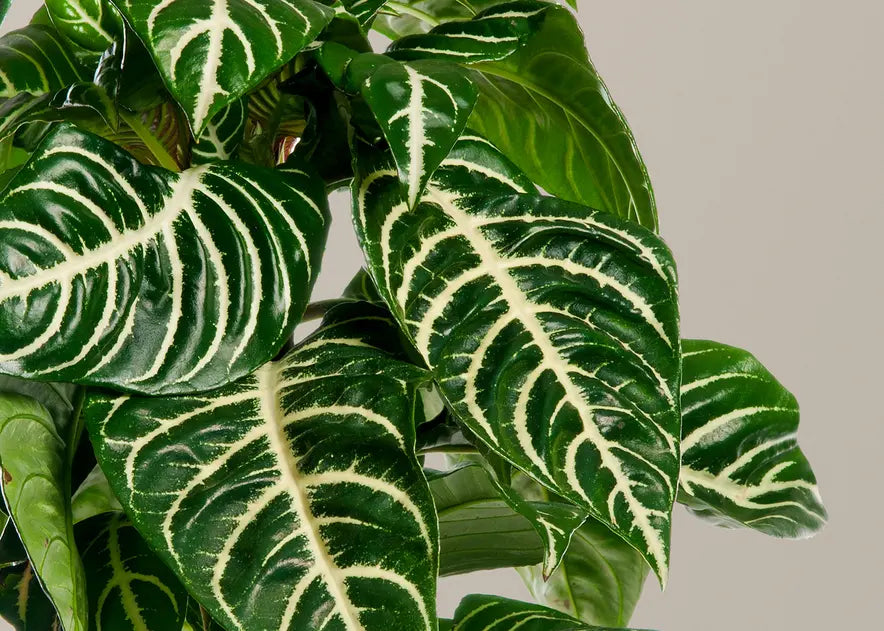
Plants 101
How to Care for a Zebra Plant
Learn how to create the best growing conditions for a Zebra plant.

The Zebra Plant, scientifically known as Aphelandra squarrosa, is a tropical plant native to Central and South America. It gets its name from the unique striped patterns on its leaves, resembling that of a zebra. This plant is a popular choice for indoor houseplants due to its striking appearance.
Types of Zebra Plant
There are several cultivars of the Zebra Plant, including the "Louisae" variety, which has larger leaves and a more pronounced stripe pattern, and the "Danica" variety, which has smaller leaves and a more compact growth habit.
Sunlight
Zebra Plants require bright, indirect light to thrive. Too much direct sunlight can cause the leaves to burn, while too little sunlight can cause the leaves to lose their distinctive stripe pattern. An East or West window would be ideal, but a diffused South window can also work as long as it the plant doesn't receive afternoon direct sunlight.
Not sure if your space will provide enough light? Consider measuring light to ensure your Zebra plant will receive enough!
Water
Water your Zebra Plant regularly by allowing half of the soil to dry out between waterings. Avoid letting the soil dry out completely, as this can cause leaf drop or browning. You can utilize a moisture meter to help you properly gauage soil moisture and avoid overwatering!
Humidity
Zebra Plants prefer high humidity levels, ideally between 50% and 60% but they can tolerate normal room humidity between 30-40%. Not sure if humidity is high enough? You can measure the level of humidity with a hygrometer or LTH meter.
If your home is particularly dry, you may need to increase the humidity around your plant. Placing a humidifier nearby will be the best way to localize adequate humidity levels consistently.
Temperature
Zebra Plants prefer temperatures between 65°F and 75°F. Avoid placing the plant in drafty areas or near heating or cooling vents, as this can cause the leaves to dry out or wilt.
Soil
Plant your Zebra Plant in well-draining soil, and make sure the pot has drainage holes to prevent water from accumulating in the soil and causing root rot. Lava rocks can be used as a drainage layer if you decide on a planter that doesn't have a drainage hole.
Common Problems
SYMPTOM: Wilting, dry potting mix
CAUSE: Thirsty plant, underwatered
SYMPTOM: Yellowing and mushy leaves, wet potting mix
CAUSE: Overwatered
SYMPTOM: Bleached spots, browning
CAUSE: Too much direct sunlight
Precautions
The Zebra Plant is toxic to pets, so keep it out of reach of dogs and cats. The sap from the plant can also cause skin irritation, so wear gloves when handling it.

Words By The Sill
Empowering all people to be plant people—a collection of articles from The Sill's team of plant experts across a variety of plant care topics to inspire confidence in the next generation of plant parents. Welcome to Plant Parenthood™.
Do Some Plant Shopping